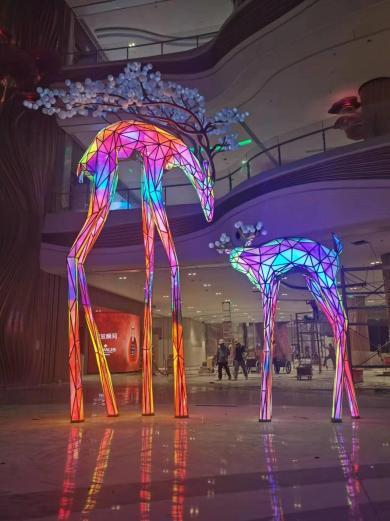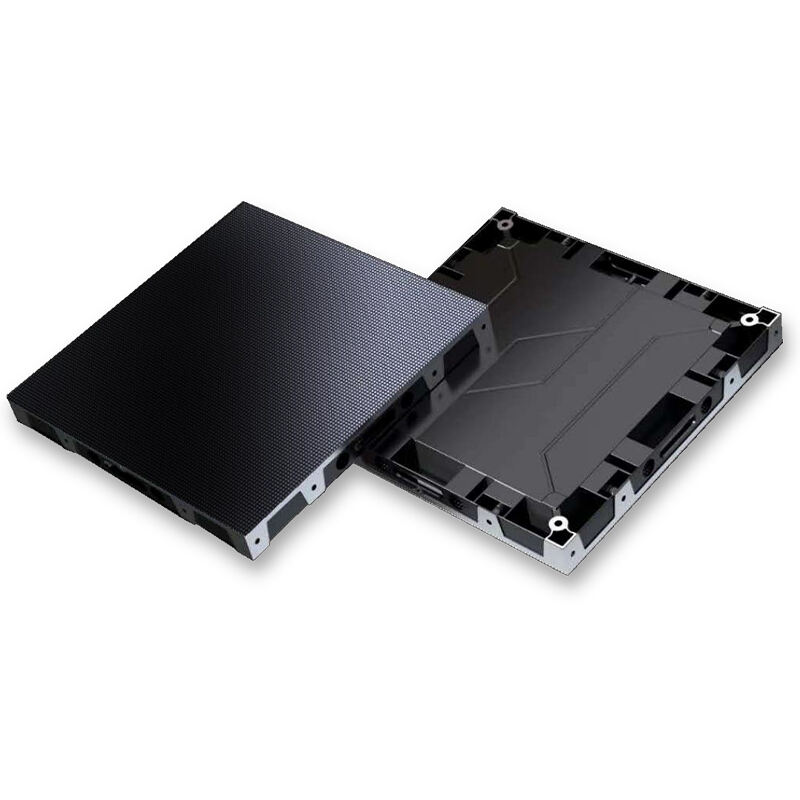JIUWLDS: Working Hand in Hand with Customers to Create a Bright Future in the LED Display Industry
The Evolution of the LED Display Industry
From Niche Technology to Mainstream Adoption
LED technology, which originated in the early 1960s, initially played a limited role as indicator lights and signage tools. However, the last decade saw a dramatic surge in adoption rates as LEDs transitioned from niche applications to mainstream uses in video displays and consumer electronics. Market reports highlight that advancements in brightness, color accuracy, and energy efficiency catalyzed this shift, positioning LEDs as vital components across multiple industries. The enhanced capabilities of LEDs now enable diverse applications, from interactive displays to customized digital signage solutions, driving broad acceptance in both commercial and consumer contexts.
Meeting Modern Demands with Advanced Solutions
Modern businesses and events increasingly demand high-resolution and customizable solutions from LED display manufacturers. This trend is backed by statistics demonstrating significant market growth, particularly in advertising and information dissemination in urban locales. Manufacturers are addressing these needs through groundbreaking advancements like higher-resolution screens and flexible configurations. Prominent companies have leveraged these innovations to enhance user experiences and operational efficiencies, showcasing the dynamic capabilities of advanced LED technologies in meeting contemporary digital signage and connectivity demands. The push towards sophisticated LED solutions ensures these displays remain integral in evolving urban and professional landscapes.
Automotive Display Breakthroughs: TDDI and OLED Integration
The automotive industry is witnessing a significant evolution in display technologies, thanks to advancements such as Touch and Display Driver Integration (TDDI) and OLED screens. TDDI technology seamlessly integrates touch functionality into the display panel, eliminating the need for a separate touch layer and providing clearer images with enhanced touch responsiveness. This integration is crucial for automotive displays, where clarity and speed are paramount for safety and user experience. Meanwhile, OLED screens offer deeper contrasts and faster refresh rates, which improve visual clarity, essential for modern cars' advanced interfaces.
According to industry studies, there is a rising demand for high-quality, interactive displays in vehicles, driven by consumer preferences for digital interfaces and the desire for enhanced connectivity. This demand is reflected in the increased deployment of TDDI and OLED technologies in new car models. Furthermore, partnerships between automotive manufacturers and display technology firms have propelled innovation. These collaborations ensure streamlined production processes and the integration of cutting-edge displays into the automotive ecosystem, marking a pivotal moment of advancement in the industry.
Immersive Engineering Partnerships in Mixed Reality
Mixed reality technologies are redefining how audiences interact with and engage in various environments, driven largely by the use of LED displays. These displays enhance user engagement by offering vibrant visuals and interactive experiences, playing a crucial role in creating immersive environments. A prime example is their application in trade shows and entertainment venues where engineering and artistic design converge to produce captivating spectacles that captivate audiences.
Collaborative projects in mixed reality often involve the integration of engineering with artistic elements, creating experiential displays that captivate and engage viewers at a deeper level. Feedback from industry experts highlights the significant impact of these immersive displays, showing enhanced audience engagement metrics. These partnerships and innovations signify a merging of technology and creativity, pushing the boundaries of what is possible in mixed reality environments, leading to more memorable and interactive audience experiences.
Large-Scale Venue Transformations Through Strategic Alliances
Strategic alliances in the LED industry are transforming how large-scale events are experienced, combining the expertise of technology providers, event organizers, and venue owners to deliver advanced LED solutions. These partnerships lead to innovative setups that can significantly enhance the visual and interactive components of events, drawing in larger crowds and enhancing user engagement. For instance, major music festivals and conferences have reported increased attendance and audience participation, attributed to the compelling nature of large LED displays.
Statistics indicate a surge in event attendance where large-scale LED displays are deployed, showcasing their impact on enhancing engagement and transforming venues. As technology continues to evolve, future trends in venue partnerships are expected to highlight further innovations in LED solutions, promising even more dynamic and immersive experiences. The potential for innovation remains vast, with these partnerships paving the way for new possibilities in the LED display rental and digital signage sectors, promoting increased adoption and technological advancement.
Rental Solutions for Flexible LED Display Needs
Benefits of LED Display Screen Rental Services
Renting LED displays offers significant advantages such as cost efficiency, flexibility for various event sizes, and avoidance of large upfront investments. Organizations often find purchasing these displays to be financially burdensome, especially for short-term projects or events. By opting for rental services, businesses gain access to cutting-edge technology without committing to long-term expenses, making it a scalable solution ideal for fluctuating demand. The rental segment of the LED industry is seeing substantial growth as more organizations realize the benefits of scalable solutions. Testimonials from clients highlight how rental services have enhanced visibility at major events while keeping costs manageable, illustrating their practicality and success.
Outdoor LED Display Rental Applications in Events
The rental of outdoor LED displays is increasingly popular for concerts, sports events, and promotional activities due to their visual impact and versatility. These screens offer bright, high-contrast visuals that are highly effective in engaging audiences, even in well-lit environments. Market trends show a rising demand for outdoor rentals, as they provide event organizers with the ability to deliver engaging and memorable experiences. Leading companies address logistical challenges by offering comprehensive solutions that ensure both the quality and reliability of the displays, assuring organizers that their events will proceed without a hitch.
Cross-Industry Applications of Modern LED Technology
Sports Venues and Fan Engagement Innovations
Modern LED displays are revolutionizing fan engagement in sports venues by offering dynamic content and real-time updates. These screens provide interactive elements and live statistics, enhancing the spectator experience like never before. Take, for example, the iconic Madison Square Garden, which has incorporated cutting-edge LED technology to improve the viewing experience and merchandise sales. By integrating real-time updates on player stats and game highlights, they successfully increased audience engagement.
Studies indicate that improved digital displays can significantly boost spectator participation and engagement levels during live events. For instance, a study from Digital Signage Today highlighted a 20% increase in fan interaction when state-of-the-art LED technology was employed. These advancements not only enrich the in-game experience but also create new revenue streams through merchandise offers and interactive promotions.
Entertainment & Retail Experiences Through Dynamic Signage
In the retail sector, LED technology is reshaping marketing strategies, offering personalized and immersive consumer experiences. Brands like FashionFusion have utilized dynamic digital signage to significantly boost consumer interaction. Their innovative use of interactive mirrors and strategic digital displays led to enhanced customer shopping experiences and a marked increase in sales through engaging content and personalized recommendations.
Dynamic signage sets the stage for future trends in retail displays as brands look to optimize marketing tactics with LED technologies. Retailers are now focusing on more tailored experiences with screens that adjust recommendations based on analysis of shopping behavior. As these technologies evolve, the potential for creating even more personalized and impactful consumer interactions will continue to grow, ensuring that retailers remain at the cutting edge of customer engagement.
Corporate & Control Room Integration Strategies
The integration of LED displays in corporate settings, especially in control rooms, fosters operational efficiency and enhanced information flow. Companies have adopted these solutions to streamline decision-making processes in high-pressure environments. For example, LED displays in control rooms at major utilities and transportation hubs offer real-time visualization of data, significantly aiding in crisis management and operational oversight.
LED technology continues to advance with potential innovations on the horizon, such as further enhancing interaction capabilities and expanding into remote operations. These developments highlight the increasing role that LED displays play in corporate environments, aiming to refine information delivery systems and bolster overall workflow efficiency. As the technology advances, corporate settings will see even more sophisticated integration options, further optimizing their capabilities.
Building a Sustainable Future Through Industry Partnerships
Eco-Friendly Manufacturing Initiatives
Manufacturers in the LED display industry are increasingly committing to eco-friendly initiatives, reflecting a global shift towards sustainability. These commitments include adopting energy-efficient production processes and utilizing sustainable materials, significantly reducing the carbon footprint of their operations. For instance, a growing number of manufacturers are focusing on reducing energy consumption and waste during production. According to industry reports, consumers show a growing preference for environmentally friendly products, which pressures companies to develop sustainable manufacturing practices to meet this demand. Additionally, collaborations between manufacturers and environmental organizations are helping set new standards for sustainability in production. These partnerships are crucial for developing innovative methods that can be adopted across the industry to ensure long-term environmental responsibility.
Customer-Centric R&D Approaches
The LED industry is embracing a trend of customer-centric research and development, where consumer feedback directly drives innovation. This approach ensures that product developments and adaptations align closely with customer needs and expectations. Surveys have shown that when manufacturers actively consider customer feedback, the resulting products are more successful in the market. For example, some companies have used collaborative projects with their customer base to innovate LED displays that better serve specific market demands, leading to breakthroughs in product utility and application. These advancements not only strengthen customer loyalty but also propel the LED industry forward by fostering a culture of continuous improvement tailored to end-user requirements. By prioritizing customer-centricity, companies can maintain a competitive edge while creating value for their clients.







 Hot News
Hot News